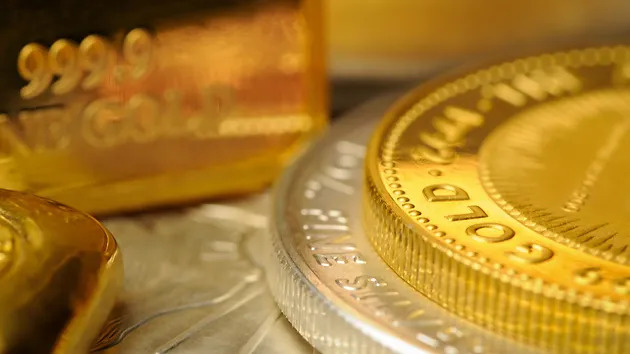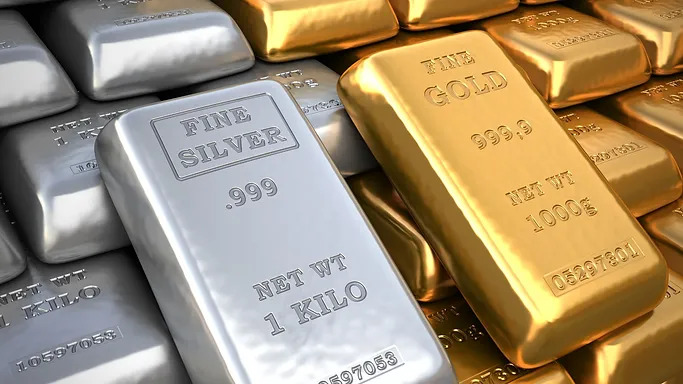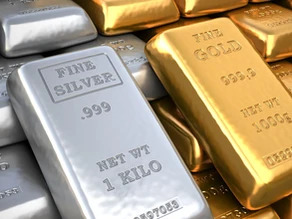Gold and Silver: Which is the Better Investment?
How gold and silver can be used in an investment portfolio
Gold and silver can make up a substantial portion of any investor's portfolio. Unlike stocks or bonds which may only see value changes over days or weeks, precious metals often move steadily over months or years.
This makes them an ideal asset class for those looking for a long-term investment, offering protection against sudden market movements.
So, is gold or silver the better investment?
Gold and silver are both precious metals that have been used for centuries as a form of currency, jewelry, and even in industrial applications. Over the past few decades, they have become popular investments due to their potential for significant returns depending on market conditions.
Precious metal investors can purchase physical gold or silver bars, coins, or ETFs, or buy stock in gold or silver companies. For the sake of this article, we're looking strictly at physical metals.
Historical performance of gold and silver as investments
The price of gold has often been very stable over long periods of time, but its value has also seen big swings when markets move quickly. The same goes for silver, but it's also important to note that silver per ounce is significantly cheaper than gold. So depending on your available investment funds and risk tolerance, you may prefer one over the other.
The bottom line is both metals have performed well during economic downturns and displayed countercyclical behavior when compared to the stock market, so the 'safest' time to invest in these two metals would be during these times.
Similarities of Gold and Silver
Safe Haven Assets
During times of economic uncertainty or market volatility, both gold and silver tend to be regarded as safe-haven assets. Why? Because they often retain their value and increase in the long term.
Investors usually turn to these precious metals during an economic downturn as a safe place to hold their money, which then drives up the price because of increased demand.
For example, during the 2008 recession, the price of gold increased by about 70% while silver increased by over 100%.
But the key is to understand that these are long-term investments that you should keep for several months or years given the slow but steady growth of their markets. You should also do your own research before making any major investment decisions as there are always risks involved.
Both are Precious Metals
Both gold and silver fall into the category of precious metals, which means they are rare and have intrinsic value. They have been used as currency and stores of wealth throughout history, and their value continually rises- especially gold.
Since the year 2000, the price of gold per ounce has increased about 4x, from nearly $500 to just under $2000 in 2023.
Although the price of silver per ounce is significantly lower than gold, its price since 2000 has also increased significantly- from just under $10 to around $25 in 2023. Although this doesn't seem like a lot for a 23-year period at first glance, imagine buying $1,000 worth of silver in 2000 and holding it until 2023- your $1,000 would be around $2,500.
So if you choose to invest in silver rather than gold, you'll probably want to purchase more that way your return is much higher in the long run.
Gold as an investment
Advantages of investing in gold
Gold has several advantages that make it appealing to investors. Its status as one of the oldest forms of money means that it has historically remained relatively stable over long periods of time.
It also offers protection during economic downturns because its price tends to rise when other markets fall—a process known as countercyclicality. Additionally, holding physical gold can give some investors a measure of security if traditional currencies start to weaken.
Disadvantages of investing in gold
There are some drawbacks to investing in gold that should be taken into consideration before committing resources to this asset class. Most notably, the cost per ounce is relatively high when compared to other investments such as stocks or bonds.
In addition, its value can be quite volatile so it may not always deliver consistent returns over time.
Silver as an investment
Advantages of investing in silver
Silver has some unique benefits that make it attractive to investors. Its price per ounce is significantly lower than gold, making it more accessible for smaller investors.
It also has greater potential for growth due to increased industrial demand compared to gold. Additionally, silver is more liquid than gold and may provide better returns in the short term.
Disadvantages of investing in silver
There are some risks associated with investing in silver that should be taken into consideration.
First and foremost is its volatility, which may lead to large losses if the market moves quickly.
Additionally, it generally holds less value when compared to gold so there may be less potential for long-term gains.
Gold and silver both offer unique investment opportunities, with similarities and differences that should be carefully considered. Both metals have stood the test of time and are recognized for their value and stability. Before making any investment decision, conducting thorough research, evaluating your financial goals, and assessing your risk tolerance is essential. By doing so, you can make an informed decision that aligns with your investment objectives.
Disclaimer: We at All Valley Coin and Jewelry are not financial advisors by any means. This is just our opinion as a vendor and precious metals.





